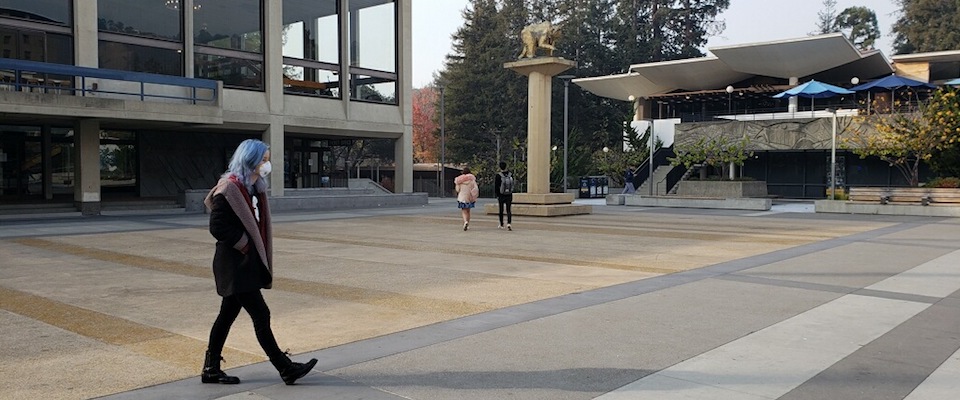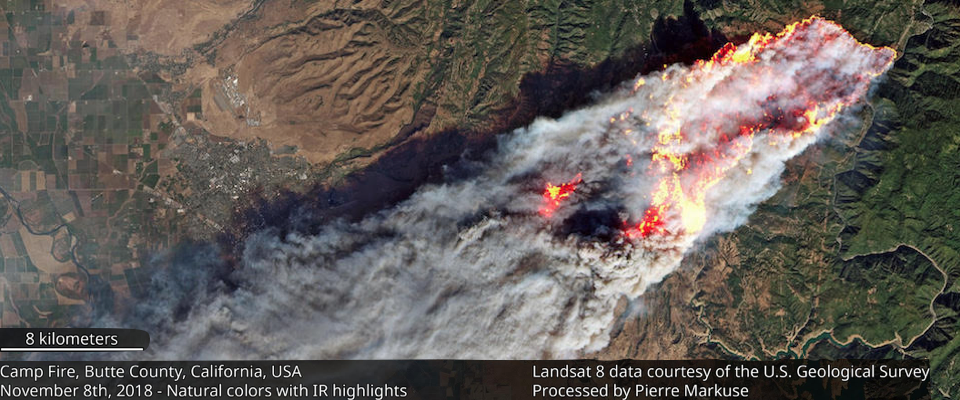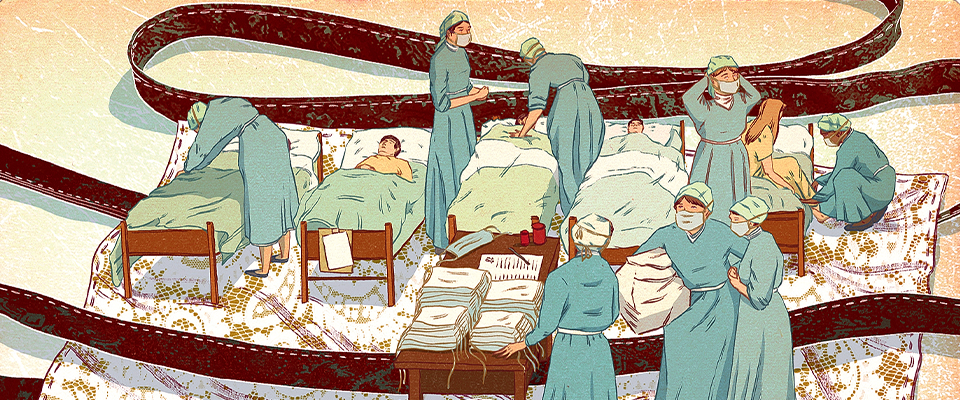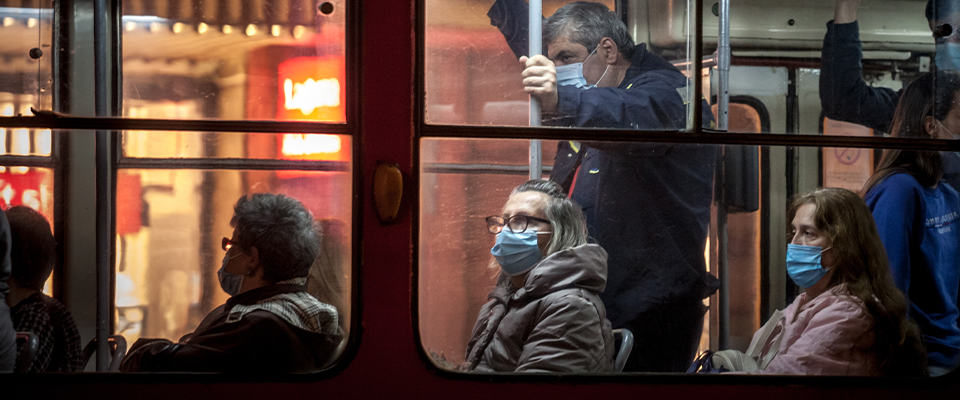With the sun obscured by a jaundiced haze and the eyes of passersby barely visible above their smoke masks, there’s a general sense of apocalyptic doom hovering over California. It’s no wonder people are making Blade Runner references.
Despite the repeated warnings about using protective masks against “unhealthy” and “very unhealthy” air quality, there seems to be some uncertainty about exactly how to wear them. So, we turned to our experts—UC Berkeley professors of environmental health sciences, Katharine Hammond and John Balmes—with a few of those unanswered questions.
1. Physiologically, and realistically, what are the effects of exposure to the current air? If I went about my life as normal, without a mask, would it affect me in the long-term?
Katharine Hammond: Air pollution and second-hand smoke can increase the risk of cardiovascular disease. We did a study a few years ago where we exposed volunteers to 30 minutes of second-hand smoke. We could see major effects on the veins and arteries that would be part of the mechanisms leading to heart attacks. That’s second-hand smoke, but I think many of these effects would apply to air pollution as well. Because heart attacks are so common, people tend to think of them as a natural cause of death. The problem is you can’t distinguish, among the people who died or had heart attacks, which ones were caused by air pollution. The death certificate doesn’t say: “Died from air pollution.”
And that’s just cardiovascular disease—there’s pulmonary disease as well. Children who live with smokers are two to three times more likely to be hospitalized for bronchitis or pneumonia. It’s definitely possible that we could have more children with bronchitis or pneumonia, although the cause may not be obvious. We’ve also shown that the air pollution in the Central Valley leads to more pre-term births and birth defects. In the short-term, people who have asthma are more likely to have an asthma attack or need more medication. Even if the air clears tomorrow, there might be effects for a few days.
I’m making the comparison to chronic second-hand smoke and city air pollution, but I understand fully well that they’re different from wildfire pollution. And that’s part of the problem too—we just don’t have all the data. So, the real answer is: I don’t know how this air pollution will affect one person. And I don’t think anyone knows. It may not have a long-term effect, or it might. Little is definitive when it comes to wildfire smoke.
John Balmes: For healthy people without underlying medical conditions, it is unlikely that carrying on life as normal without masks during this week of bad air quality would lead to long-term health effects. Chronic exposure to the levels of particulate pollution that we are currently experiencing, i.e., living in a polluted Chinese or Indian city, would increase the risk of long-term effects.
2. Recent reports claim that breathing in the current air is comparable to smoking a half dozen cigarettes. Is that a fair comparison?
Hammond: There are several assumptions in these comparisons…I would say, in one day, one is breathing in particles that have similar weight to smoking three to four cigarettes.
Balmes: No.
3. How is this air better or worse than cigarette smoke?
Hammond: Although this is a good question, I would say this is not fully understood. We know that both are very bad; both have thousands of different chemicals, many the same, but in different proportions. Both have many different health effects, and I expect one might be worse for some and the other worse for other health effects.
Balmes: Cigarette smoking is far worse than breathing in the levels of air pollution we are currently experiencing due to wildfire smoke. With each puff of a cigarette, one inhales 800 mcg/m3 of fine particulate matter (PM2.5).
4. People often take their masks off when they enter the BART station or arrive at work. We’ve been told to wear masks when we’re outside, but perhaps we should be wearing them inside too. How do you wear your own mask for maximum protection?
Hammond: Wearing these respirators, if they are worn properly, puts a strain on the heart and lungs, as there is physical work involved in pulling the air through the mask (if there is no work, then the air is slipping in on the edges of the mask, not going through the filter, and so the particles are coming in and you are not getting protection). Therefore, there is a trade-off between the protection from particulate matter the respirator provides and the strain on the body to pull air through the filter (see the sheet from the Sacramento County Department of Health Services Public Health Division N95 respirator recommendations which recommends wearing these masks—most of their points are legitimate). Respirators are not designed for continuous usage. I do not wear my own indoors.
Balmes: Because I am healthy, I don’t wear a N95 mask when I am inside, even when I smell smoke. That said, wearing your mask when you smell smoke is totally reasonable because the smell of smoke means there are fine particles present.
5. I’ve seen people out running with masks on. Is it okay to exercise outside, as long as we’re wearing a mask? Or should we be avoiding any outdoor exertion, regardless?
Hammond: Why are you exercising? If for the health benefits, one is doing more harm than good exercising outdoors in this situation.
Balmes: Exercise outdoors leads to an increased inhaled dose of PM2.5 for two reasons: 1) Exercise requires more oxygen delivery to the muscles so one breathes more rapidly (increased minute ventilation); and 2) Strenuous exercise like running leads to mouth breathing which bypasses the efficient filtering mechanism of the nose. So, I recommend exercise indoors when air quality is bad, or if one can’t exercise indoors, wear a mask to reduce the dose of inhaled PM2.5.
6. I’ve read that these N95/100 masks last only for eight to ten hours of continuous or even intermittent use. Does that mean we should be replacing our masks every day? And until we’re able to find a replacement (given that so many stores are out of stock), is an old N95 mask, or even a surgical mask or scarf, better than nothing?
Hammond: In general they’re made for one-time use and throwing them away. But these are designed for workplace hazards.
To the second part, the answer is no. Just as water will find the path of least resistance, air will even more so. Unless you have a mask that is well-sealed, the air will come in the sides rather than being forced through the filter. Surgical masks are used to protect other people from what might come out of your mouth. But they do nothing to protect you from the air that’s coming in. It’s a totally different design.
Balmes: These masks are designed for workers exposed to fine particulate dusts on the job for a whole eight-hour work shift. At the end of such a shift, the masks are typically dirty and sweaty, but not if one only uses the mask intermittently when one goes outdoors in bad air. My wife has asthma and she has experienced exacerbations secondary to wildfire smoke in the past. She wears her N95 mask religiously but keeps them for many days or even weeks. It is a waste to discard them after intermittent use.
7. Is there any concern about CO2 exposure (from your own exhalation) when wearing these masks?
Hammond: I see that the Sacramento Health department cited this concern, however, if the mask has an exhalation valve, that should not be a problem; without the valve, it could be.
Balmes: If you were a wildland firefighter, yes, but 180 miles from the wildfire, no.
8. Should I worry about particles getting into my food/drink while I’m outside, or is the concern only about breathing them in?
Hammond: No and yes—but what are you doing eating or drinking outside—go inside!
Balmes: Only inhalation.
9. Assuming normal smoke masks aren’t a viable option, what should we be doing to protect our babies and pets?
Hammond: You are right that the respirators are designed for adults, not children or pets, and therefore they will not fit right and so not be protective. Keep them indoors, with the doors and windows shut. If your furnace/AC has forced air, run with the fan only through the best filter the system will handle.
Balmes: Keep them indoors.
10. Is there anything else we should know that hasn’t been properly conveyed to the public?
Hammond: First of all, be aware that the masks are designed for adults. The mask has to fit if it is to work at all. It should force the air to come through the mask. In general they won’t work for children, and there are some people whose faces are small, for whom they won’t work. When you wear it, there should be a metal strip fitted above the nose. You should use two straps, one above the ears and one below. Using a proper, filtered mask is like trying to sip a milkshake through a thin straw—there will be resistance as air doesn’t want to pass through the filter.
In the workplace, you’re supposed to first have a worker checked out to see if their lungs and heart are healthy enough to handle the extra workload of drawing the air through a mask or respirator. I think for anyone who knows they have heart or lung problems, the pollution will exacerbate it—but the mask will as well. It’s a trade-off. People with heart or lung problems really should talk to their doctor, or someone who has been trained with respirators, about that.
Balmes: Because I am a physician-scientist who studies the health effects of air pollution, I am always asked about the health effects of wildfire smoke exposure. That’s understandable, but the real emergency here is not the relatively mild health risks posed by the current bad air quality, it is the climate change which is the driver of catastrophic wildfires. It’s November—the fire season used to end a month earlier. In Northern California, we have experienced at least three catastrophic wildfires that killed many people and led to regional poor air quality in the past year—the Tubbs Fire in Sonoma-Napa, the Carr Fire in Redding, and the Camp Fire in Butte County. This is what Gov. Brown calls the new normal. We need to get our act together to double-down on our efforts to mitigate climate change, do better forest management to reduce risk of catastrophic fires, and better protect people living in the urban-wildland interface (create buffers without vegetation around homes, place early warning cameras and sensors around at-risk communities, and provide better evacuation warnings and routes).





















